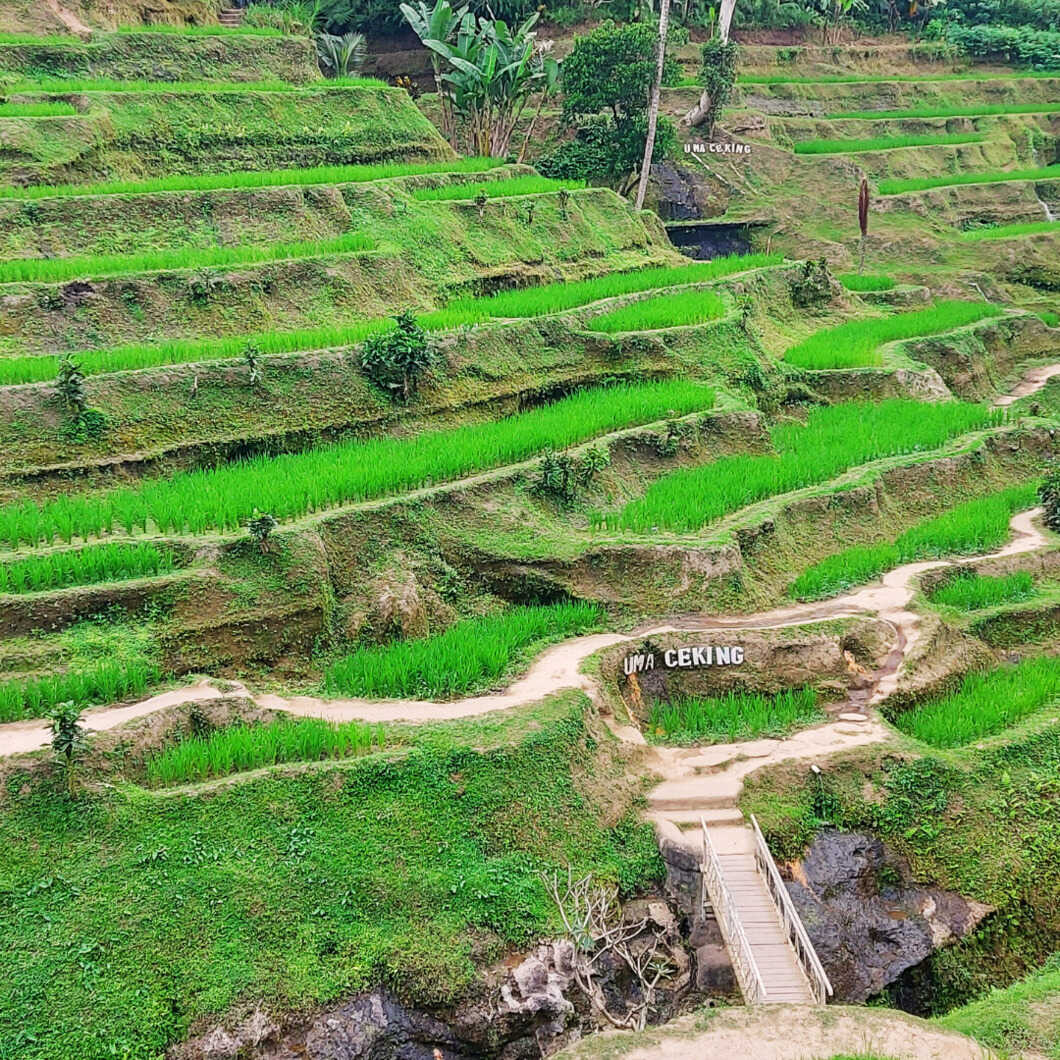Tegallalang Rice Terraces, located in the northern part of Ubud, Bali, are renowned for their stunning landscapes and traditional rice farming methods. The terraces have been cultivated for centuries, with the origins of their construction dating back to the 8th century when the Balinese developed sophisticated irrigation systems to support their agriculture. The system, known as subak, is a cooperative irrigation management technique that involves a community-based approach to water distribution, ensuring that each rice terrace receives adequate water supply.
The rice terraces are particularly notable for their striking beauty and intricate design. Carved into the steep slopes of the land, the terraces create a cascading effect that is visually mesmerizing. The layers of green rice paddies, complemented by the surrounding lush jungle, offer a picturesque landscape that has become one of Bali's most iconic and photographed sites. This landscape is not only a feast for the eyes but also a testament to the ingenuity and resilience of traditional Balinese agricultural practices.
In addition to their visual appeal, the Tegallalang Rice Terraces hold cultural and historical significance. The subak system reflects the Balinese philosophy of harmony between humans and nature, as well as the strong sense of community that is integral to Balinese life. Visitors to the terraces can witness the traditional farming methods still in practice, including the use of hand tools and natural irrigation techniques, which have been passed down through generations.
Today, the Tegallalang Rice Terraces are a popular tourist destination, attracting visitors who are eager to experience their natural beauty and learn about Balinese culture. The terraces also serve as a valuable resource for local farmers, who continue to maintain the traditional practices that sustain their livelihoods. The integration of tourism with agriculture helps support the local economy while preserving the cultural heritage of Bali.
TEGALLALANG RICE TERRACE
A good tourist spot to see the rice terraces, and also Swing between Coconut Tree
